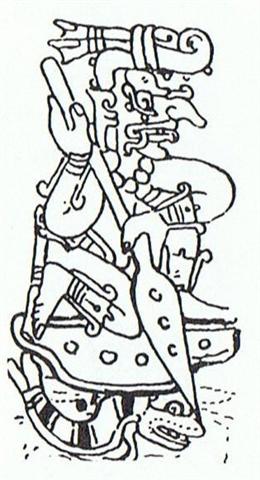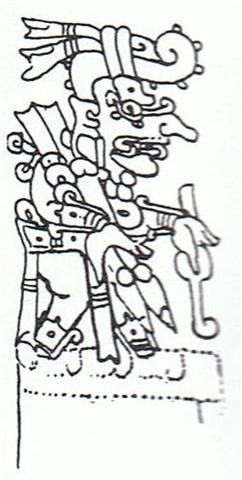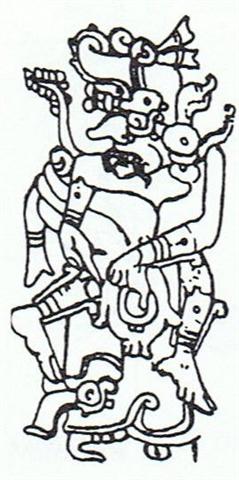Counting from Almuqaddam 5 (329) there is a week to hau tea in Ca2-1:
And counting from hau tea in Gregorian day 107 (= 472 - 365) there are a further 52 days to hau tea in Ca4-3. 7 + 52 = 59 = 2 lunar synodic months. Both hau tea glyphs have 'Janus eyes'. Such eyes, I have suggested, are related to solstices, and this is evidently the case in line Ca4, where June 20 is illustrated with the same picture as June 8 - in contrast to the pair of hau tea which follow the June solstice:
From Polaris (April 17) to the 'Janus' hau tea in June 20 there are 171 - 27 = 144 (= 12 * 12) days, and to June 21 there are 145 (= 5 * 29) days. Time was well ordered. Metoro saw (or at least used as a comparison) a kind of tree (rakau) growing (tupu) from June 6, half a π counted from the beginning of the year. The 'odd ball' in Ca4-1 is in the past (at left) and low down. The tallest ball is located not straight up but somewhat to the left. Maybe it refers to the Achernar straight line 52 days earlier, because this line is leaning slightly forward:
Algenib Persei at RA 50.0, where Metoro said kupega hia mai, could have served as a 'corner stone' marking the end of 50 days counted from March 21. There are approximately 25 nights from Achernar to Algenib Persei and there are 25 nights from manzil day 360 to tagata rogo. Glyph 77 (at λ Eridani) - 25 (at Achernar) = 52 days (although the position of Achernar is only approximate). Glyph 77 (at Gregorian day 314 / 2) - 52 / 2 = glyph 51 which corresponds to manzil day 360. When the Mayan Rain God reaches his 4th station he merges with a kind of monster tree (rakau) which makes him turn around (his time is over):
In his 1st station he paddles a canoe on the sea, in the 2nd he is in midair, and in the 3rd station his feet are making prints in the ground, probably in order to plant seeds. There are 5 + 5 + 4 = 14 toe marks and 3 foot steps (not 4). |
















